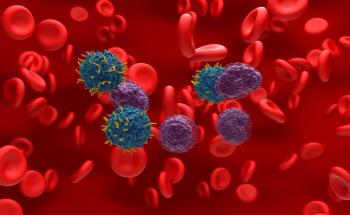
Acute Primary Angle Closure Resolved After Medical Treatment in a Quarter of Eyes, Study Finds
A retrospective study found that 26% of eyes with acute primary angle closure (APAC) were resolved after initial medical treatment.
A study published in the
APAC is an ophthalmic condition that requires emergency treatment, first with topical therapies and then with surgical intervention if needed, to resolve the increased intraocular pressure (IOP) that results from the acute attack.
This study used 87 eyes from 87 patients (17 men and 80 women) with a mean (SD) age of 69.0 (9.0) years. All patients developed APAC between January 2006 and June 2020 at Kitasato University Hospital. All patients needed to complete at least a 3-month follow-up to be included.
Patients who had a history of ocular surgery, ocular trauma, or other concomitant eye disease outside of glaucoma were excluded from the study. Only 1 eye was randomly chosen from each patient for analysis if bilateral APAC had occurred.
All eyes received topical 2% pilocarpine and systemic mannitol administration. Surgical treatment was performed after that if APAC was not resolved at first treatment, and all patients who needed surgery were separated into LI and lensectomy groups. Best spectacle-corrected visual acuity (BSCVA), selected treatment method, IOP, and corneal endothelial cell density (ECD) were all measured at the final follow-up.
The mean (SD) pretreated IOP in the study population was 56.4 (9.0) mm Hg (95% CI, 38.7-74.1 mm Hg). Patients went a mean (SD) of 1.6 (2.7) days between onset of subjective symptoms and medical examination. The mean (SD) follow-up period was 15.5 (19.3) months.
Of the 87 eyes with APAC, 23 eyes (26%) were resolved after initial treatment. There were 29 (33%) eyes that were treated with LI and 35 (40%) eyes that were treated with lensectomy. The mean (SD) BSCVA of the study population was 0.09 (0.43) logMAR, the mean (SD) IOP was 12.6 (2.8) mm Hg, and the mean ECD was 2200.00 (644.7) cells/mm2 at the final follow-up.
IOL implantation was simultaneously performed in 17 of 35 eyes (49%) after lensectomy, with 15 undergoing in-the-bag fixation. Intraocular lens implantation was also performed in 17 of the remaining 18 eyes secondarily, with only 1 eye remaining aphakic (without a lens). Bullous keratopathy developed in 1 eye after LI, and glaucoma surgery was needed in 7 eyes (8%).
There were no significant differences in BSCVA, IOP, or ECD between the treatment groups.
There were some limitations to this study. It did not assess ECD in all eyes, and the follow-up time and observation period were relatively short. The etiology of APAC was not confirmed due to lack of images using anterior segment optical coherence tomography or ultrasound biomicroscopy. The study was conducted retrospectively without a control group, so a prospective controlled study in a larger cohort would help to confirm these results.
The researchers concluded that their study demonstrated that a little more than a quarter of eyes with APAC were resolved after initial medical treatment. The remaining patients were helped by LI and lensectomy after initial medical treatment.
“We believe that this information will be clinically helpful for understanding the overall prognosis of post-APAC patients,” the authors wrote.
Reference
Iijima K, Kamiya K, Iida Y, Shoji N. Comparison of laser iridotomy and lensectomy outcomes for acute primary angle closure. J Ophthalmol. Published online May 30, 2022. doi:10.1155/2022/6959479
Newsletter
Stay ahead of policy, cost, and value—subscribe to AJMC for expert insights at the intersection of clinical care and health economics.














































